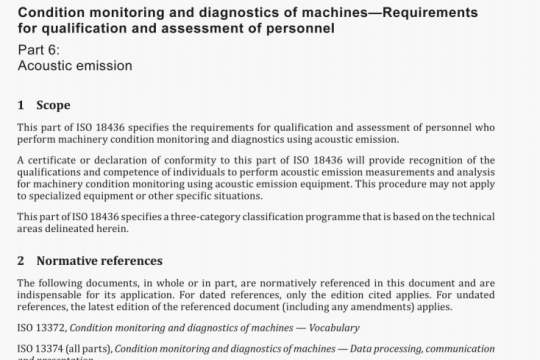BS EN ISO 7326:2016 pdf free
BS EN ISO 7326:2016 pdf free.Rubber and plastics hoses – Assessment of ozone resistance under static conditions
Method 1 and method 2 are the methods normally used, method 3 being used only if it is not possible to carry out the test in accordance with method 2. Method 4 is suitable for all bore sizes. Method 5 is specifically for testing expandable hoses in the expanded state.
The results of tests carried out in accordance with method 1 may not be comparable with the results obtained when tests are carried out in accordance with method 2 or method 3, even if the cover compounds of the hoses under test are identical in composition and are cured to the same degree. The test method to be used shall be as specified in the product standard.
No test shall be carried out within 24 h of manufacture.
The time interval between manufacture and testing shall be as specified in ISO 23529. For evaluations which are intended to be comparable, the test shall, as far as possible, be carried out after the same time interval after manufacture.
The test pieces, mounted as described for the appropriate procedure, shall be conditioned for 48 h in a substantially ozone-free atmosphere at standard temperature (see ISO 23529), in darkness or subdued light.
Mount each test piece on a test piece holder (5.3), as shown in Figure 2, so that the required elongation of the hose cover, measured over a distance of 20 mm, is reached. If not otherwise specified,the elongation of the cover shall be 20 %. Coat the edge and the lining of each test piece with an ozone-resistant lacquer.
After periods of exposure of 2 h, 4 h, 24 h, 48 h and 72 h, examine the test pieces, whilst still in the extended condition, under × 2 magnification, ignoring the area adjacent to the fixing points. If cracks are discovered, record their nature and the time at which they were first observed.BS EN ISO 7326 pdf free download.




